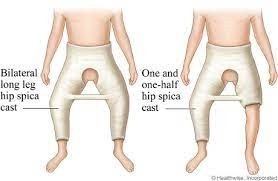The nurse is caring for a patient who had abdominal surgery yesterday and is receiving morphine through patient controlled analgesia (PCA). What action by the nurse is a priority?
Asking for nausea
Evaluating for sacral redness
Checking the respiratory rate
Auscultating bowel sounds
The Correct Answer is C
Morphine is a potent opioid analgesic that can depress the respiratory system. Respiratory depression is a potential adverse effect of morphine, and it is essential for the nurse to monitor the patient's respiratory rate regularly to ensure adequate oxygenation and prevent respiratory complications.
By checking the respiratory rate, the nurse can assess if the patient is breathing adequately and detect any signs of respiratory depression. If the respiratory rate is significantly decreased or the patient shows signs of respiratory distress (e.g., shallow or irregular breathing), immediate intervention is necessary to address the situation promptly.
Nursing Test Bank
Naxlex Comprehensive Predictor Exams
Related Questions
Correct Answer is D
Explanation
Hip spica casts are typically used to immobilize the hip joint and are often used in the management of hip dysplasia or after surgery. These casts can cause restricted mobility and limit blood flow to the legs and feet, which can lead to complications such as swelling, decreased circulation, or pressure sores.
Checking capillary refill in the toes is a critical nursing intervention to assess for the presence of adequate circulation and blood flow to the affected limb. If capillary refill is slow or absent, it may indicate compromised circulation and require immediate intervention to prevent further complications.
Palpating a brachial pulse, assessing bilateral radial pulses, or auscultating the heart rate apically are not the priority nursing actions for an infant with a hip spica cast. While monitoring vital signs and circulation are important components of nursing care, the priority at this stage is to assess and manage the immediate postoperative needs of the patient, including monitoring for potential complications related to the hip spica cast.

Correct Answer is A
Explanation
In a client with minimal change nephrotic syndrome (MCNS), the primary concern is the management of fluid volume and hydration status. MCNS is characterized by increased glomerular permeability, leading to excessive protein loss in the urine and subsequent hypoalbuminemia. This can result in fluid retention and edema formation, including facial edema.
Hypertension is a common complication in clients with MCNS, and it further contributes to fluid retention and potential complications. Therefore, closely monitoring the client's fluid volume and hydration status, including daily weights, intake and output measurements, and assessment of edema, is crucial to detect any changes and guide appropriate interventions.
While other actions, such as consulting with a registered dietitian about adequate intake or using sterile technique to prevent infections, may be important aspects of the client's care, they are not the priority in this situation. The immediate concern is managing the client's hypertension and fluid volume status to prevent complications associated with MCNS.
Whether you are a student looking to ace your exams or a practicing nurse seeking to enhance your expertise , our nursing education contents will empower you with the confidence and competence to make a difference in the lives of patients and become a respected leader in the healthcare field.
Visit Naxlex, invest in your future and unlock endless possibilities with our unparalleled nursing education contents today
Report Wrong Answer on the Current Question
Do you disagree with the answer? If yes, what is your expected answer? Explain.
Kindly be descriptive with the issue you are facing.
